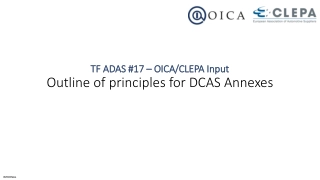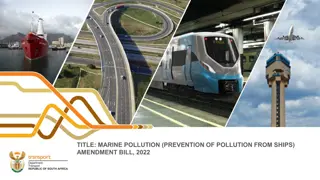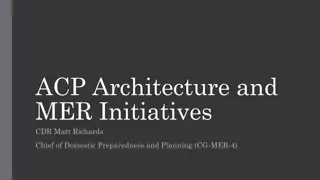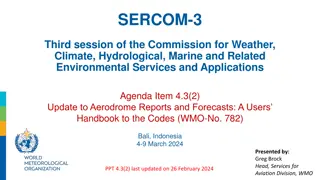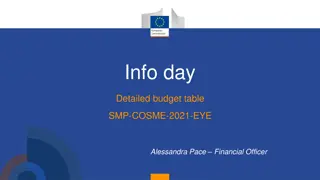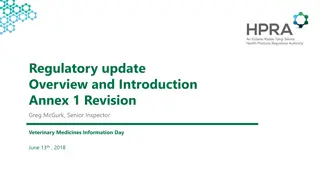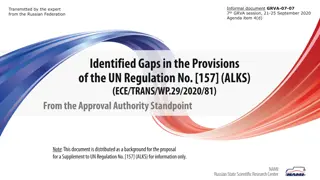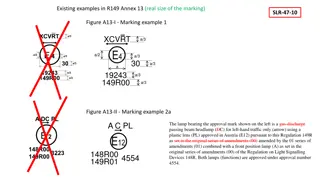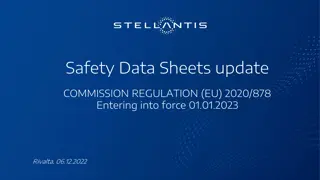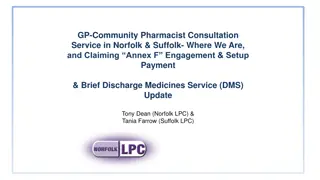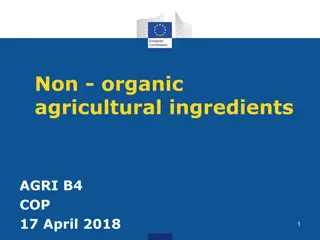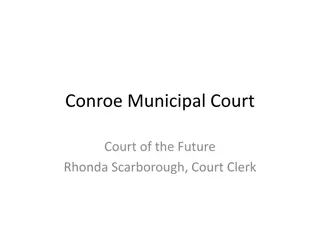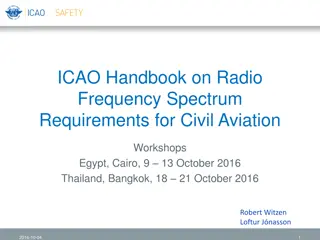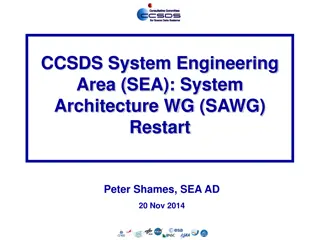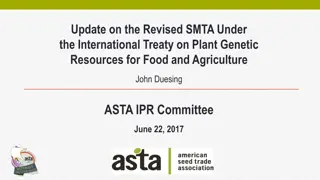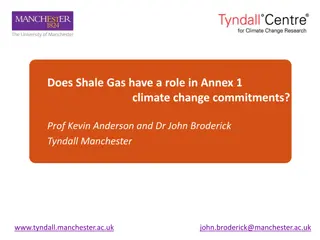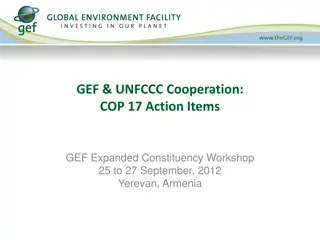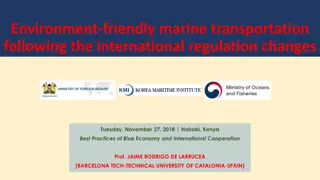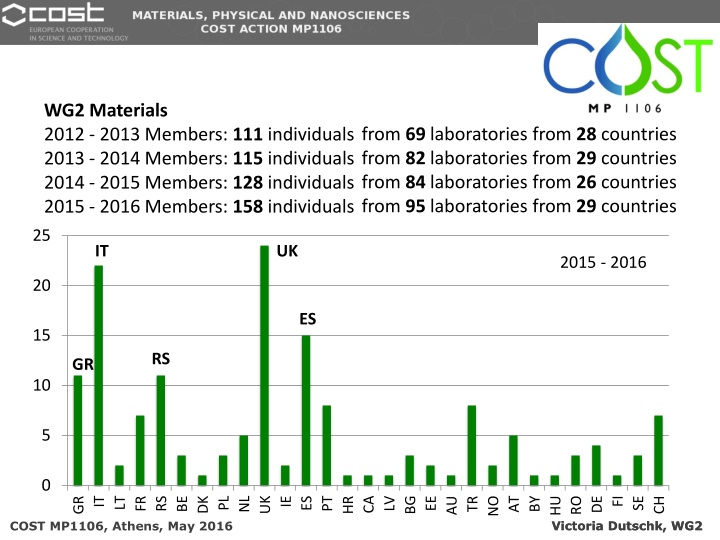
Advancements in Surfactants and Nanoparticles for Materials Science Research
Explore the progress in characterizing surfactants, utilizing nonconventional biocompatible materials, and leveraging nanoparticles for antibacterial properties and disinfection. Discover the latest innovations in materials science research from an international collaboration spanning multiple countries and laboratories.
Download Presentation

Please find below an Image/Link to download the presentation.
The content on the website is provided AS IS for your information and personal use only. It may not be sold, licensed, or shared on other websites without obtaining consent from the author. If you encounter any issues during the download, it is possible that the publisher has removed the file from their server.
You are allowed to download the files provided on this website for personal or commercial use, subject to the condition that they are used lawfully. All files are the property of their respective owners.
The content on the website is provided AS IS for your information and personal use only. It may not be sold, licensed, or shared on other websites without obtaining consent from the author.
E N D
Presentation Transcript
WG2 Materials 2012 - 2013 Members: 111 individuals 2013 - 2014 Members: 115 individuals 2014 - 2015 Members: 128 individuals 2015 - 2016 Members: 158 individuals from 69 laboratories from 28 countries from 82 laboratories from 29 countries from 84 laboratories from 26 countries from 95 laboratories from 29 countries 25 IT UK 2015 - 2016 20 ES 15 RS GR 10 5 0 BE UK BG IT BY IE PT PL LT EE TR NL ES CA HU DE FI DK LV NO CH GR HR AT RS AU SE FR RO Victoria Dutschk, WG2 Victoria Dutschk, WG2 COST MP1106, Athens, May 2016
WG2 Materials 2014 Reported: 15 laboratories (18%) from 10 countries 2015 Reported: 24 laboratories (29%) from 12 countries 2016 Reported: 17 laboratories (18%) from 12 countries Feedback 2016 countries: Serbia, Greece, Italy, France, Denmark, Spain, Poland, UK, Germany, Ireland, Latvia, Turkey No feedback 2016 countries: Austria, Belgium, Finland, Sweden, Hungary, Norway, Estonia, Australia, Canada, Switzerland, Romania, Croatia, Belarus, Portugal, Lithuania, Bulgaria, Netherlands Victoria Dutschk, WG2 Victoria Dutschk, WG2 COST MP1106, Athens, May 2016
WG2 Materials Highlights 2012 - 2016 Characterization of surfactants and their usage for other materials Physicochemical and rheological properties of two novel nonconventional biocompatible and biodegradable glycerol ether surfactants Using the self-organisation of interfacially active agents for the generation of porous solids with well-controlled surface properties Victoria Dutschk, WG2 Victoria Dutschk, WG2 COST MP1106, Athens, May 2016
WG2 Materials Highlights 2012 - 2016 Antibacterial properties and toxicologic effects Proceeding to disinfection applying sputtering technology to produce thinner coated surfaces with lower amounts of non-renewable metal resources like Cu, Ag Innovative nanoparticulate TiO2 surfaces leading to the loss of bacterial viability with the time of cell-wall damage in the dark Interaction of nanoparticles with lipid monolayers as in vitro models to evaluate potential toxicological alterations Development of a photo-reactor using thin film composed of Mn and Cu doped TiO2 NPs to remove antibiotics and antibiotics resistance bacteria from treated urban waste water Victoria Dutschk, WG2 Victoria Dutschk, WG2 COST MP1106, Athens, May 2016
WG2 Materials Highlights 2012 - 2016 Developing of microfibers Development and scale-up of novel protein microfibers for structuring and encapsulation using in-shear solvent attrition focusing on green (solvent free) methods Victoria Dutschk, WG2 Victoria Dutschk, WG2 COST MP1106, Athens, May 2016
WG2 Materials Highlights 2012 - 2016 Manufacturing of foams and their usage for other materials Protein-stabilized foams polymeric nanolatexes Nanoporous metallic foams based on electrodeposition - hydrogen bubbles act as a negative dynamic template around which metal grows, thus forming a foam structure highly Porous metallic foams containing nickel, cobalt, iron and copper, and several combinations of these metals: application as electrodes in asymmetric supercapacitors Microporous carbonaceous materials from particle-stabilized foams Victoria Dutschk, WG2 Victoria Dutschk, WG2 COST MP1106, Athens, May 2016
WG2 Materials Highlights 2012 - 2016 Fabricating functional surfaces Superhydrophobic aluminum by one-step wet synthesis using fluoroalkyl silane Superhydrophobic surfaces by mixed inorganic-organic coating on different substrates Steel substrates coated by chromium oxide thin films through reactive magnetron sputtering for biomedical applications Innovative sol gel route in neutral hydroalcoholic condition to obtain antibacterial cotton finishing by zinc precursor Design, synthesis, self-cleaning of uniform, adhesive and low cytotoxic surfaces in the dark or under light under mild conditions Victoria Dutschk, WG2 Victoria Dutschk, WG2 COST MP1106, Athens, May 2016
WG2 Materials Highlights 2012 - 2016 Inorganic nanostructured materials Silicon Carbide-based nanowires for biomedical applications Assessment of cellular and molecular effects of iron oxide nanoparticles Nano and ionexchange mebranes for reuse of wastewaters Victoria Dutschk, WG2 Victoria Dutschk, WG2 COST MP1106, Athens, May 2016
WG2 Materials Highlights 2012 - 2016 Emulsions: Encapsulation of essential oils Stabilization of w/o emulsions using polyglycerol esters Properties of o/w emulsions stabilized by gelatin/NaCN mixtures Rheological investigation on crystallization of an unhydrogenated vegetable fat dissolved in sunflower oil Victoria Dutschk, WG2 Victoria Dutschk, WG2 COST MP1106, Athens, May 2016
WG2 Materials Highlights 2012 - 2016 Synthesis of functional nanoparticles Synthesis of Ni2+ doped TiO2 nanocrystals showing room temperature ferromagnetism In situ photo-reduction of Ag+-ions using TiO2 nanoparticles deposited on cotton and cotton/PET fabrics Sm3+ doped TiO2 nanoparticles synthesized from nanotubular precursors - luminescent and structural properties Influence of sulphide precursor on crystal phase of ternary I III VI2 semiconductors Spray-drying as method of production of nanostructured, functional powders for potential medical applications (inhalation) Victoria Dutschk, WG2 Victoria Dutschk, WG2 COST MP1106, Athens, May 2016
WG2 Materials Cooperation COST Action MP1004 COST Action MP1103 COST Action TD1204 COST Action MP1106 RTWH Aachen, Germany Thin Film Centre, University of West Scotland, UK AGFA Cooperation between WG2 groups Victoria Dutschk, WG2 Victoria Dutschk, WG2 COST MP1106, Athens, May 2016

